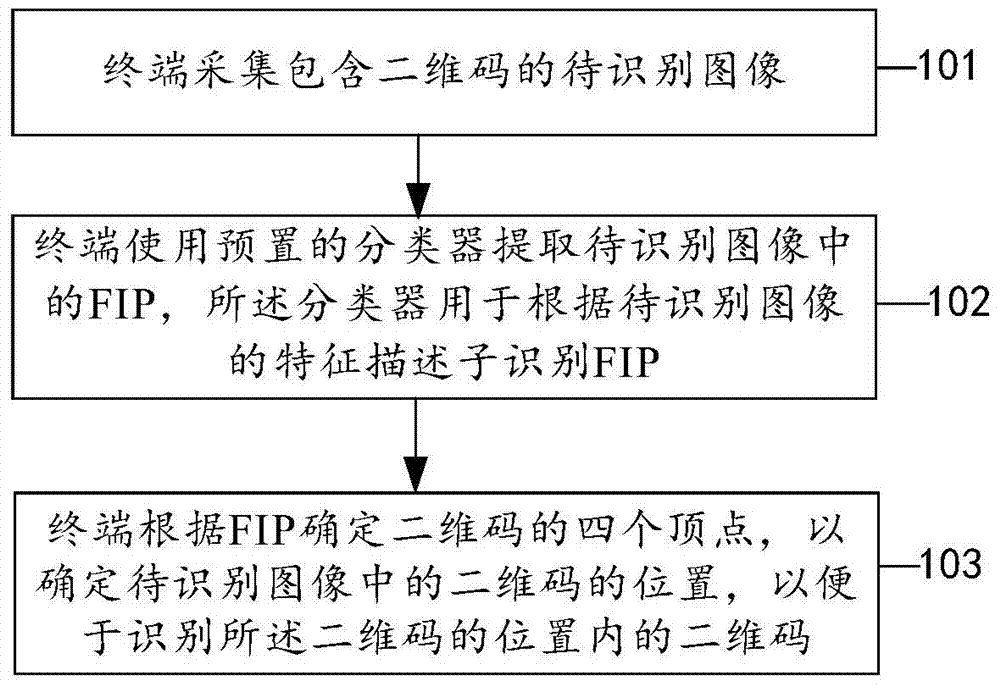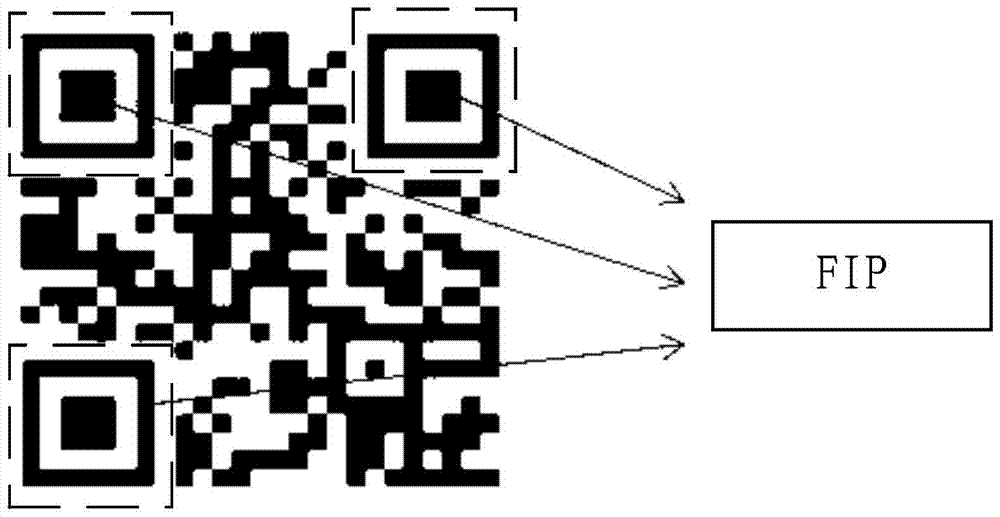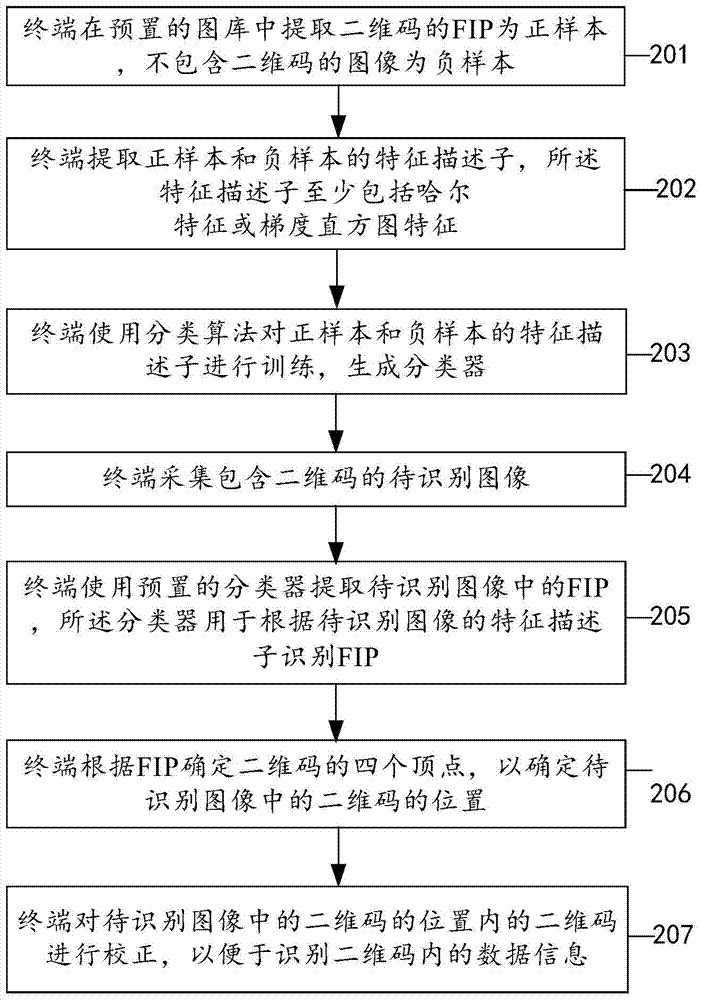Recognition method and terminal of a two-dimensional code
A technology for identifying terminals and two-dimensional codes, which is applied to the identification method of two-dimensional codes and the field of terminals, can solve the problems of two-dimensional code positioning and identification failure, unable to correctly identify FIP, etc., and achieves the effect of improving the detection and recognition rate.
- Summary
- Abstract
- Description
- Claims
- Application Information
AI Technical Summary
Problems solved by technology
Method used
Image
Examples
Embodiment 1
[0058] Embodiments of the present invention provide a method for identifying two-dimensional codes, such as figure 1 shown, including:
[0059] 101. The terminal collects an image to be recognized that includes a two-dimensional code;
[0060] 102. The terminal uses a preset classifier to extract the FIP in the image to be recognized, and the classifier is used to identify the FIP according to the feature descriptor of the image to be recognized;
[0061] 103. The terminal determines the four vertices of the two-dimensional code according to the FIP, so as to determine the position of the two-dimensional code in the image to be recognized, so as to recognize the two-dimensional code within the position of the two-dimensional code.
[0062] Specifically, in step 101, when the user needs to recognize the two-dimensional code through the terminal, a terminal with a camera function may be used to capture an image to be recognized including the two-dimensional code.
[0063] Amon...
Embodiment 2
[0080] Embodiments of the present invention provide a method for identifying two-dimensional codes, such as image 3 shown, including:
[0081]201. The terminal extracts the FIP of the two-dimensional code from the preset gallery as a positive sample, and the image that does not contain the two-dimensional code is a negative sample;
[0082] 202. The terminal extracts feature descriptors of positive samples and negative samples, where the feature descriptors include at least Haar features or gradient histogram features;
[0083] 203. The terminal uses a classification algorithm to train the feature descriptors of positive samples and negative samples to generate a classifier;
[0084] 204. The terminal collects the image to be recognized including the two-dimensional code;
[0085] 205. The terminal uses a preset classifier to extract the FIP in the image to be recognized, and the classifier is used to identify the FIP according to the feature descriptor of the image to be r...
Embodiment 3
[0110] Such as Figure 5 As shown, a hardware schematic diagram of a terminal is provided for an embodiment of the present invention.
[0111] The terminal is a terminal device with a camera, which can be a wireless terminal or a wired terminal, such as a mobile phone terminal, IPAD, etc. This embodiment uses a mobile phone terminal as an example to illustrate:
[0112] Such as Figure 5 , the mobile phone terminal includes a processor 01 , a transceiver 02 , a memory 03 and a bus 04 .
[0113] Wherein, the processor 01, the transceiver 02 and the memory 03 are connected through bus communication.
[0114] The processor 01 is the control center of the mobile terminal. The processor 01 processes the data received by the transceiver 02 and calls the software or program in the memory 03 to execute various functions of the mobile terminal.
[0115] The transceiver 02 can be used to receive and send signals and data during the process of sending and receiving information or coll...
PUM
 Login to View More
Login to View More Abstract
Description
Claims
Application Information
 Login to View More
Login to View More - R&D
- Intellectual Property
- Life Sciences
- Materials
- Tech Scout
- Unparalleled Data Quality
- Higher Quality Content
- 60% Fewer Hallucinations
Browse by: Latest US Patents, China's latest patents, Technical Efficacy Thesaurus, Application Domain, Technology Topic, Popular Technical Reports.
© 2025 PatSnap. All rights reserved.Legal|Privacy policy|Modern Slavery Act Transparency Statement|Sitemap|About US| Contact US: help@patsnap.com



